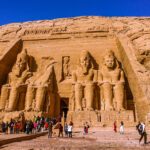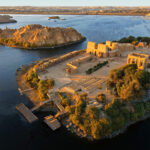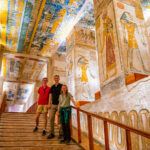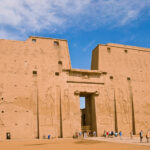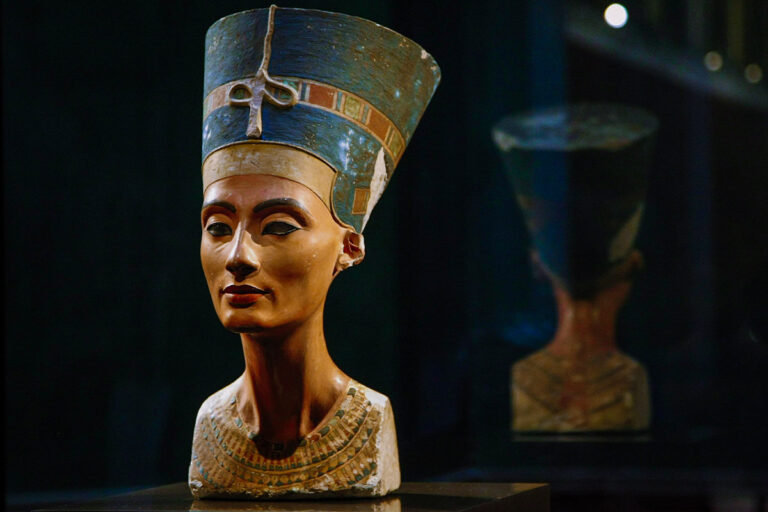The Sahara Desert extends 5,000 km westward from the Nile to the Atlantic Ocean. The largest expanse of desert in the world is filled with small patches of green where people have managed to survive. Contrary to what most people think, oases are usually in rocky areas where wind and time have carved large depressions deep enough to allow water from the aquifers to reach the surface.
In the Western Desert of Egypt, a single aquifer flows north from Sudan in an arc of five oasis cities, roughly parallel to the Nile. Evidence from the past shows that people have been using what nature offers them since at least 5000 BC. During the reign of the Pharaohs, the four Nelward oases of Kharga, Dakhla, Farafra, and Bahriya were an excellent line of defence against the Libyan tribes.
Rich Cairo residents and ex-pats love to go to the desert and oases to spend the weekend away from the noise and pollution of the city.
The Western Desert and Oasis in Egypt:
Fayoum Oasis:
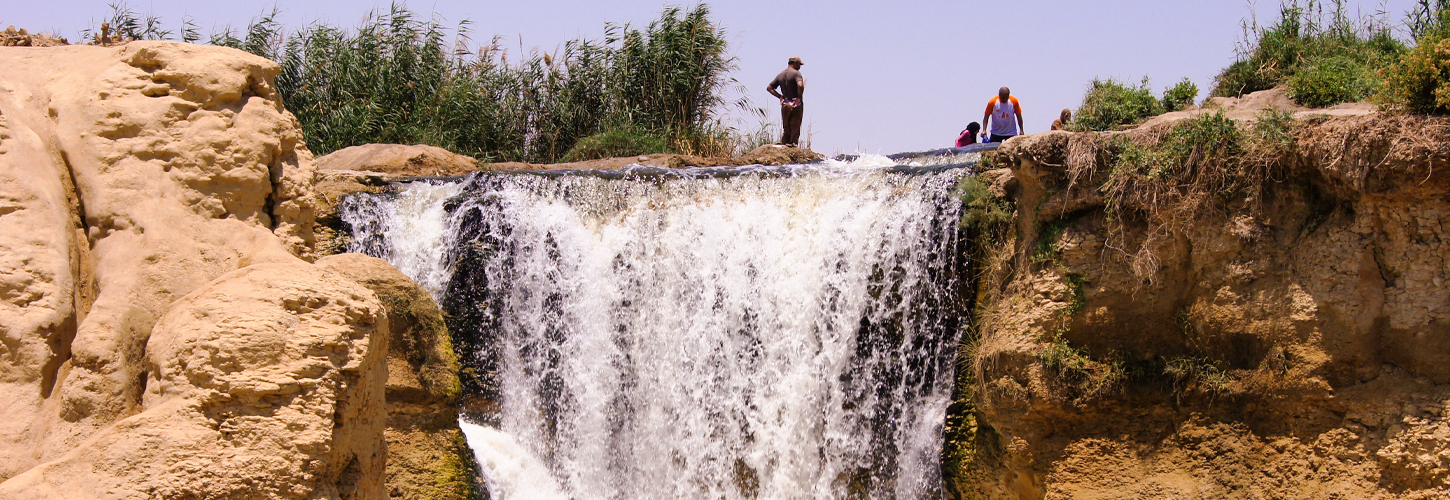
Easily accessible from the Egyptian oases, Fayoum has much to offer, such as excursions into the desert, traditional handicrafts, delicious local food, and the world’s only open-air museum in Wadi Hitan. Fayoum is only an hour or two away from Cairo, so it’s an excellent place for day trips or a weekend getaway. It also has some unique places to stay.
Tunis Village is located in the centre of the oasis. It is a lovely and leafy complex of beautiful hotels, apartments and country villas you can rent. Tunisia is known for its pottery shops and thriving artist community. There are also some significant pottery collections that you should check out. You can also get great local food here, such as the delicious feteer meshaltet and the roast duck, two of the oasis specialties you must try.
When we leave the oasis and go to the desert, we visit Wadi El Rayan, a vast nature reserve that could take days to explore. If you want to make the most of your trip, visit Wadi El Rayan and Wadi Hitan. They have ancient ruins, fossils of whales and other sea creatures from long ago, waterfalls, and soft dunes. Below we will show you some of the Fayoum attractions:
1- Wadi Rayan
Wadi El Rayan is a separate depression 15 km from the oasis where humans have become a safe haven for wildlife. The British came up with the idea of pumping water from the Faiyum into the valley, but it didn’t come into effect until 1966. Three lakes and a waterfall were created, and the area became famous for bird nesting. Wadi El Rayan is now a nature reserve. It is home to the only known population of slender-horned deer and eight other species of mammals.
2- Valley of the Whales
In the western desert of Egypt, in Fayoum, there is the Valley of the Whales, which has fossils of the oldest whales that are no longer alive. These fossils show one of the most important parts of evolution: how the whale changed from land to ocean animals.
Siwa Oasis:

Siwa is only 50 km from the border with Libya, but it is not easy to get there. The journey to Egypt’s remote oasis can take up to 12 hours by bus or about 9 hours by car, but the long drive is worth it.
Siwa is a unique and mysterious place with a strong Berber culture and links to the ancient Egyptian and Greek cultures. Its history and traditions go back thousands of years.
One of the essential attractions in Siwa Oasis is Shali, located in the middle of the oasis. It is an ancient city with a lot of life built with mud from the beautiful and exotic salt lakes surrounding it.
Siwa is also home to the Oracle of Amun, an ancient temple that was an essential stop on Alexander the Great’s journey through Egypt. According to legend, the oracle confirmed Alexander’s belief that he was the rightful ruler of Egypt.
Siwa’s natural beauty is also something that cannot be ignored. The oasis is surrounded by salt lakes that look like palm forests and olive groves that seem to go on forever. This and the vast desert and natural springs give the oasis its magical, unforgettable charm.
1- Shali village
The word for “city” in Siwa is “shali”. The archive material, mud mixed with salt, was used to build Shali Village. When it dries, it becomes as hard as cement. It is a unique building style dating back to 1200 AD.
2- Salt lakes in Siwa
With their clear blue waters and high salt content, the Siwa lakes are a significant tourist destination where Egyptians and tourists worldwide swim and relax. People often visit Siwa to enjoy the scenery, eliminate bad energy, treat skin diseases, and relax.
Bahariya Oasis:
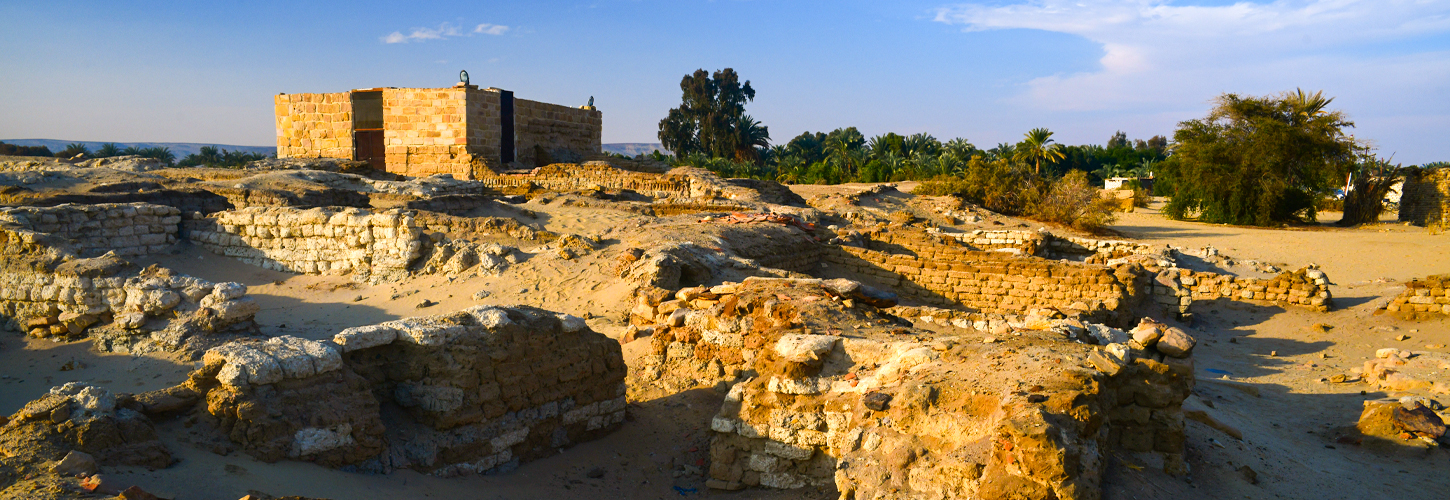
Bahariya Oasis is only a few hundred kilometres from Cairo, and it is inhabited by an ancient North African tribe that moved to the oasis thousands of years ago. Archaeologists have even found evidence of Neolithic societies in the Bahri Depression, a smaller land area than the surrounding areas.
They also found pharaonic artifacts indicating that the ancient Egyptians lived here until the 26th Dynasty and during the Greco-Roman era. There are plenty of temples and tombs to see in and around the oasis, such as the Al Muqaysbih Palace of Alexander the Great and the Valley of the Golden Mummies found in the 1990s.
1- Heritage Museum
The Oasis Heritage Museum is a collection of palace-like buildings on the highway just outside the city. The museum is a work in progress, and iMahmoud Eid made it, a self-taught sculptor inspired by Badr in Farafra. The statues of both artists show an almost extinct way of life in the oases.
2- Temple of Alexander
Built of the same soft stone as the mausoleums at Ain al-Muftah, the wind has damaged its sandstone reliefs for centuries. This is why the SCA had to recreate the face and cartouche of Alexander the Great that archaeologists found in the 1930s. This is (or was) the only temple in Egypt with an image and cartouche of Alexander. Some people think he passed by the Navy on his way to Memphis.
Farafra Oasis:
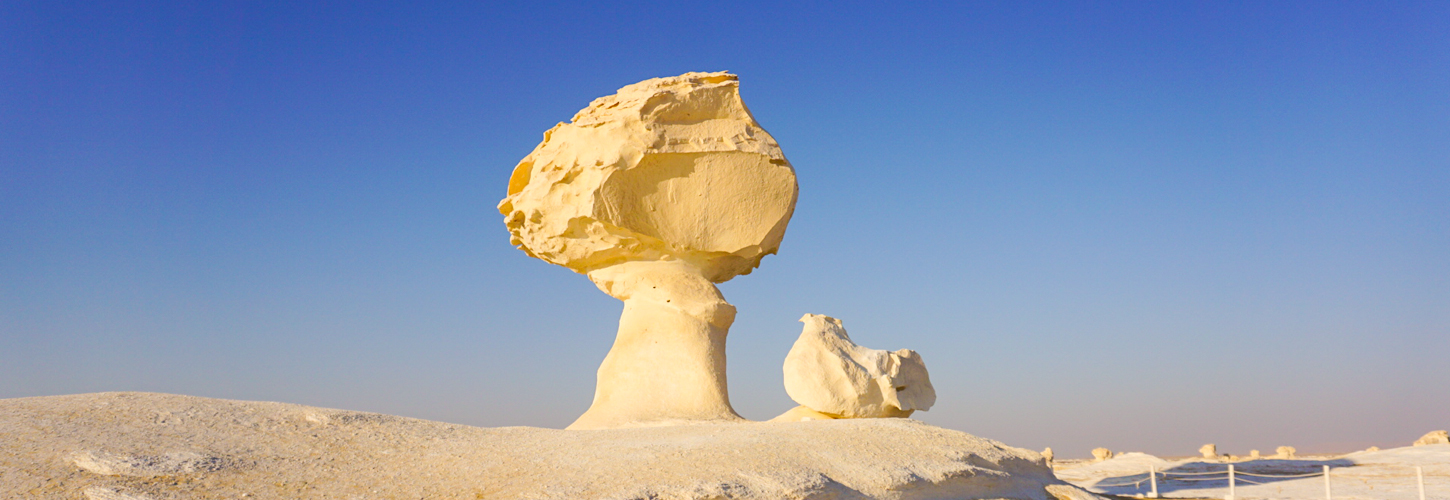
Farafra is an ancient city located south of Bahariya Oasis. Known for its wells and hot springs, it is also a popular way to get to the White Desert, which can also be accessed from the Bahriya.
The White Desert, located about 50 kilometres north of the city, is one of the most exciting places in Egypt. It contains white rock formations made of ancient limestone deposits shaped by sand and wind into bizarre shapes that look like they came from a science fiction movie.
Farafra is also the way to get to the Black Desert and Crystal Mountain, two other picturesque places in the Western Desert that are worth seeing.
1- The Black Desert
The Black Desert goes most of the way to the Farafra Oasis. It is a hellish landscape of cone-shaped hills and black basalt peaks scattered across tan sands. In the winter, you can see the Black Desert from the air in a hot air balloon, and it’s a once-in-a-lifetime experience.
2- The White Desert
The White Desert is in the Sahara Desert. It is part of the Farafra depression. It also has the oasis towns of Farafra, Ain El Maqfi, and Ain El Wadi. The park is famous for its white sands, rock formations made of white sand, and how it leads to the Great Sand Sea.
Dakhla Oasis:

In the extreme south of Farafra is the oasis of Dakhla, which consists of several small towns. This oasis is among the greenest and most beautiful places in the Western Desert.
It has olive groves and palm forests, and there are also ancient ruins nearby of the city of Qasr Dakhla, which date back to the tenth century and are made of mud bricks. It is the most famous thing in the oasis.
Even the oldest are the tombs of Al-Mazwaqa, which are believed to have been built during the time of the Pharaohs, and Deir Al-Hagar, a Roman temple built during the reign of the notorious Emperor Nero. The ancient Egyptian gods Amun-Ra, Mut, Seth, and Khonsu.
1- Deir al-Hagar
Even though it is called “Deir al-Hagar” in Arabic, it was once a Roman temple for the Theban trinity and the god of the oasis, Seth. The temple’s hypostyle hall, sanctuary, and sandstone wall were built in the first century AD. The temple later became a Coptic monastery. The dunes ate it, causing the roof to collapse and showing only the tops of the columns.
2- Mut
Mut started as a palace or castle on top of a hill. It was split into sections by gates that were locked at night. Even though the top of the mountain is in ruins, the adobe lanes below are still busy and fun to explore. Behind a ridge, the old town is hidden, but it’s easy to find.
Kharga Oasis:
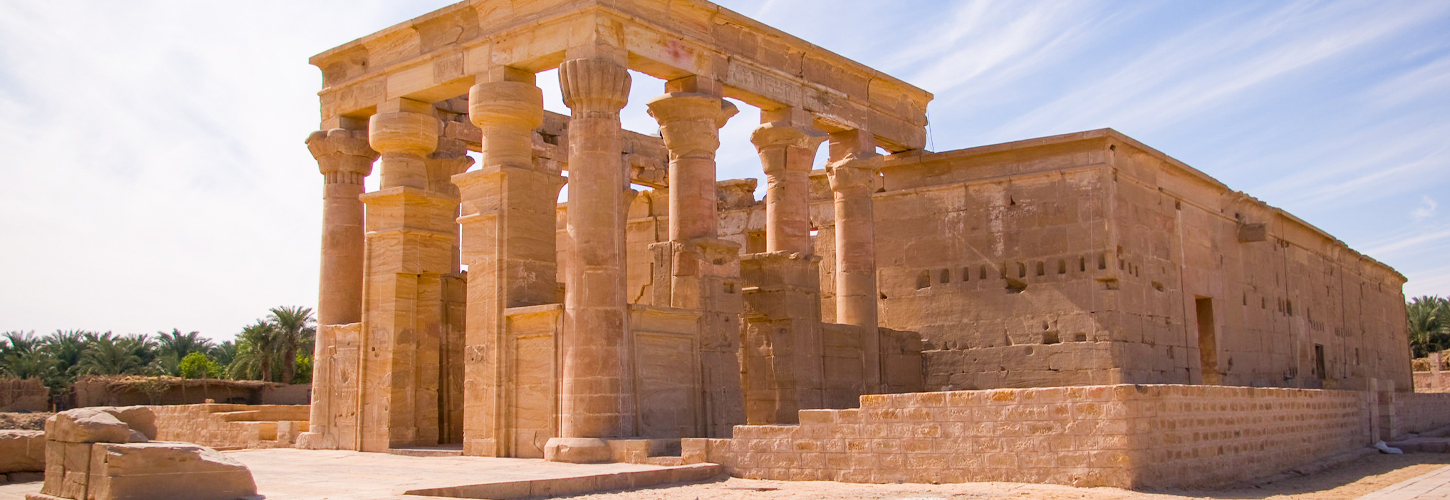
Kharga is the newest oasis in Egypt, the last oasis in the Western Desert and the southern oasis. When trade caravans were still spreading worldwide, Kharga was an important stopping place for them. Since it is located in the south, it was used as a resting place along the Arbaeen road, which runs from the north to the south of Sudan.
Kharga has some grand Roman forts and some beautiful ruins dating back to the 6th century BC, such as the Shower Palace and the Temple of Osiris, which show how important it was to trade in the past. Kharga is the last stop before the Sudanese border, about 600 km south of Cairo.
1- Museum of the New Valley
The New Valley Museum is a large, modern building that resembles the nearby Coptic tombs of Bhagwat. It has artefacts from three oases, and the Greek and Roman sarcophagi are the most impressive. And the death masks in the north at Al-Labaka Palace. and the mummies of rams, eagles, and birds from the Dakhla Oasis.
2- Temple of Hibis
The Temple of Hibis is the most significant cult shrine in any oases. It is located directly off the highway. It was built for Amun-Re during the reign of Psammetichus II of Dynasty 26. After a failed maintenance of the temple was dismantled to move it to higher ground, the engineers decided that a drainage system was the best way to deal with the rising groundwater that had weakened its foundations. Then the temple was rebuilt.
The Great Sand Sea:
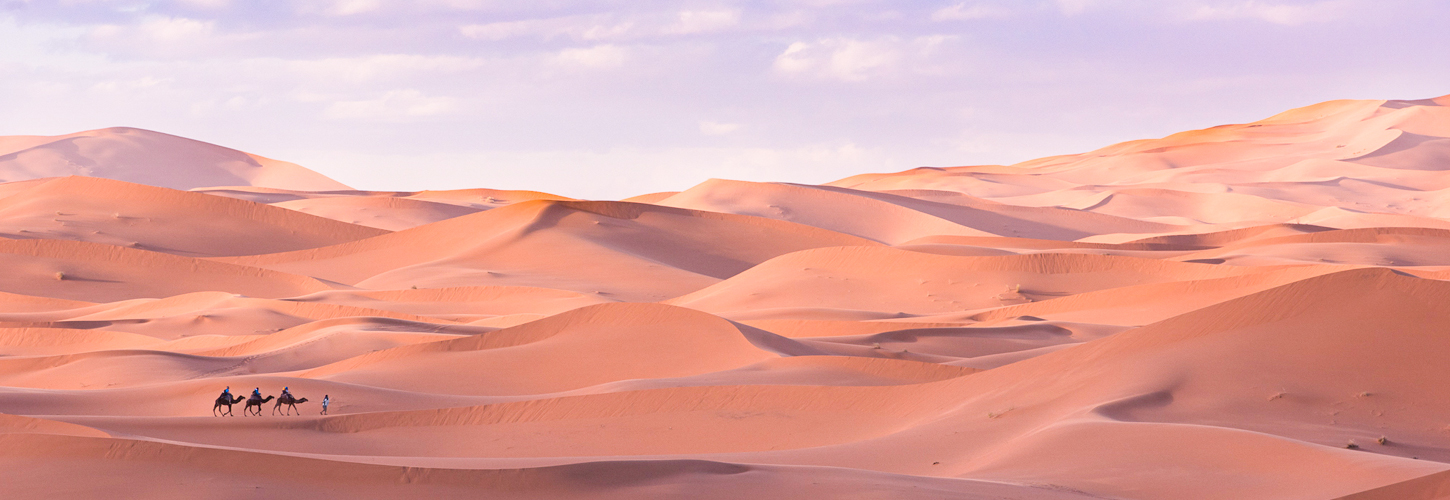
Between Gilf Kabir and Siwa Oasis lies a vast area of dunes called the Great Sand Sea by explorer Gerhard Rolfs. The Sand Sea is about the size of Ireland, and its area is 72 thousand square kilometres. It extends an average of 650 km from north to south and 300 km from east to west. About two-thirds of this area consists of parallel Seef dunes that can be more than 100 meters high and up to 150 kilometres long. Depending on wind direction, these dunes are separated by flat “corridors” a kilometre or two wide that run northwest to southeast.
Although these Al Seef dunes constantly change, satellite images have shown them to sit on stable dunes. Where the Sword Dunes landed on cliffs in other parts of the Sand Sea, they had turned into crescent-shaped sprinkles. Although quicksand seems to be the only “life” in the Sand Sea, some plants exist. He stays asleep for years until a brief rain shower wakes him up.
Scientists and explorers have been interested in this strange landscape for a long time, and now tourists go there to see its wonders. A short trip from Siwa Oasis to Bir Wahid will allow you to see its vast dunes without spending much money, while a desert safari can take you to the following places.

